Knock on wood
After more than a decade of research, timber trials and a jv into production, Lürssen hopes it’s found the next best thing to old-growth teak…
As part of News Editor Conor Feasey’s deep dive into the thorny topic of teak, he spoke with Feadship, Lürssen and Oceanco to explore their cutting-edge approaches to long-term sustainable teak alternatives.
Their responses are being published in three parts – here is the second; the first has already been published and the third will follow in the coming days.
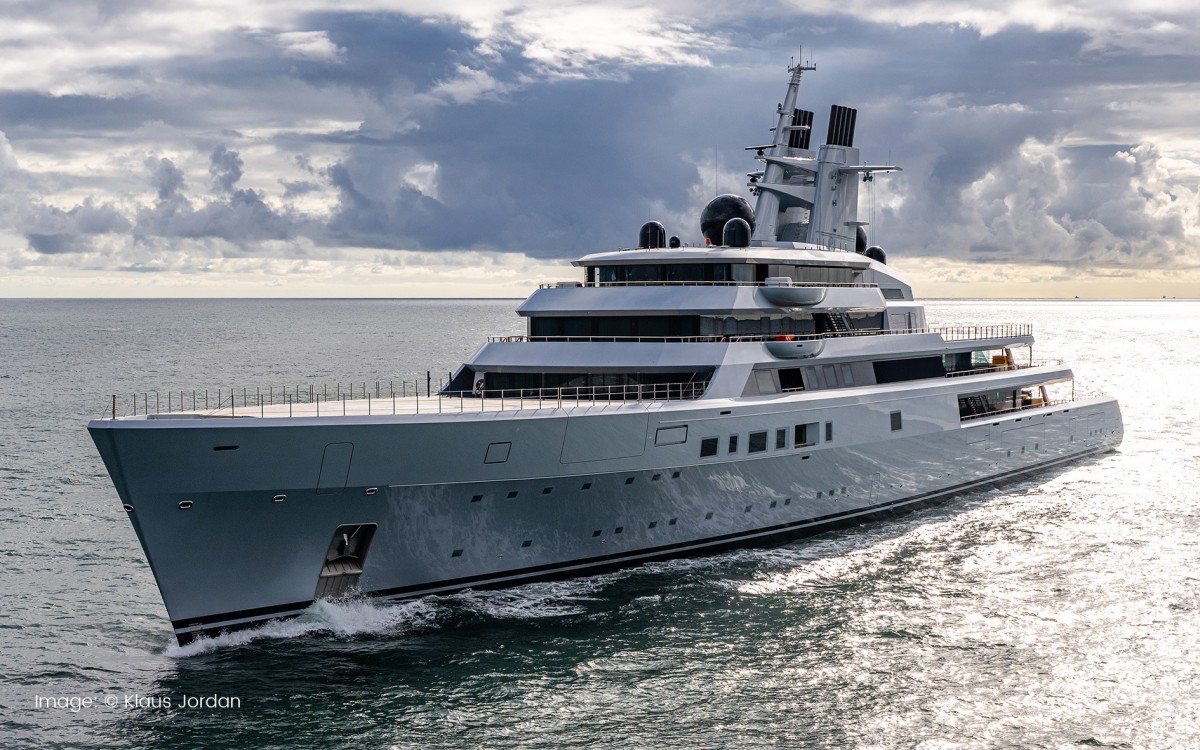
Tesumo is installed on the 300-square-metre helipad deck of 142-metre Dragonfly.
Lürssen is renowned for building German giants, but on the opposite side of the Weser River in Bremen, just beyond the main yard, is a comparatively small, unassuming facility that has been working to a new standard. In 2008, the yard entered into a research partnership with the University of Göttingen, with the programme running for more than four years focused on identifying suitable timber species and exploring impregnation and thermal modification techniques. More than 50 timber species were put through testing. Some failed immediately, others held up in the lab but broke down under actual maritime conditions. And a few absorbed resins inconsistently, a flaw that only revealed itself once thoroughly investigated in the lab.The failures were somewhat unpredictable, but after years of iteration, one species proved viable.
Enter Tesumo. Now in full-scale production, with its first deck in use on Dragonfly and a second yacht currently in build, the scientific process only bears part of the story so far. To gain a deeper understanding, I sit down with Lürssen’s head of development and innovation, Bernhard Urban, and design department manager, Frank Lüssen, to explore how Lürssen brought Tesumo to life and what it takes to convince owners, captains and entire teams to step off teak for a new product.
“The main driver back then was that teak sourcing was already starting to become a challenge after the first sanctions against Myanmar. So, we explored a lot of the materials already on the market, but we didn’t find anything that could match teak in performance. That’s when we started our own research,” explains Urban.
“In the end, the most promising approach was a combination of three separate processes: a thermal treatment, an impregnation step and a hardening process that fixes the resin within the wood. After that research phase, we conducted numerous tests. We installed small sample areas on various yachts, mostly on sun decks, to test their performance. We eventually found several promising options, but then we discovered that not all species responded equally well to the treatment For example, some specimens can be impregnated, others can’t, and you can’t tell from the outside. That made it feel like gambling. We had a test area that looked perfect, then the next one was really poor. There were a lot of hurdles like that.”
“It was the combination of the three processes that got us to Tesumo,” adds Lüssen. “Some of the outcomes were quite unexpected. The timber species we ended up with wasn’t even on our radar at first. Initially, we were looking at traditional boatbuilding timbers like Oregon pine. But as Bernhard said, one of the key steps is resin impregnation and you want the resin to go into the wood on a cellular level, not just into the surface pores. Mother Nature prevents that process in 95 per cent of timber species, so, we had to find the ones that would allow it. And even then, it takes time for a material to prove itself. You’ve got weathering tests, but they’re never perfect:, either too quick, too soft, or too aggressive. Because if and when you see cracks form, you need to know how bad they are and that simply takes time.”
It wasn’t until about eight years ago that the team felt comfortable from a research point of view that they were satisfied with their progress, having gained enough experience to move forward with full-scale testing and move into production. A joint venture with the University of Göttingen and Wolz Nautic (who feature in the first edition of Deck to the Future) followed, although it took time to fully establish. When the venture entered full-scale production, it finally had a name. It was here that Tesumo became its own entity, with Lürssen securing the patent for maritime applications and non-marine uses remaining with the University of Göttingen.
“The production process itself is fully in place now and it’s running smoothly. The next step is for Tesumo to lock in those supply routes and create a stable, ongoing process, making sure there’s enough timber available for consistent production.”
The production process is based on the initial thermal conditioning in autoclaves under heat and pressure, a pressure-based resin impregnation, a chilling and curing cycle of up to ten days and thorough traceability via barcoded planks.
“With the development project, you’ve got your lab-scale recipe and your step-by-step process. But going from that to an industrial scale, you need completely different machinery. That’s part of what’s taken the last two years – getting the impregnation facilities, curing ovens, and everything else operational here in Bremen,” explains Lüssen.
Even once the Tesumo process had been proven, production brought a different kind of complexity. Limba, the species selected, had fallen out of commercial rotation. Trade routes had faded and new quality protocols taking on board the high Yacht Standard have to be established. Limba grows naturally in forests, mainly in Ghana and the Ivory Coast. Another key hurdle was ensuring the raw material came from sustainable sources that were managed correctly. With sustainability a core tenet of the Tesumo offering, providing the latter is imperative, even if it literally grows on trees.
“We were lucky,” says Lüssen. “We live in an industrialised country where you can buy almost any timber species in small quantities and that was enough to get started. The University of Göttingen did an incredible job checking whether those species would be available in larger volumes. So, we ruled out any rare or exotic timbers from the beginning. We never intended to go into a South American rainforest and start harvesting. Limba had actually been widely used in interiors, so it was already known to the market.”
“That’s one of Tesumo’s main prio-rities – to set up those sourcing routes and provide the right timber,” adds Urban. “The production process itself is fully in place now and it’s running smoothly. The next step is for Tesumo to lock in those supply routes and create a stable, ongoing process, making sure there’s enough timber available for consistent production.”
It also needs to be understood that after the development of the product Tesumo has been founded as an independent company as it needs a large team of hard-working specialists to achieve the step from a lab-proven material into a full-scale production.
Lürssen’s first Tesumo client was the owner of Alibaba, now known as Dragonfly. The 142- metre Dragonfly is now in its first season, and this is where the real challenge begins. With the owners’ team willing to dip their toe in, the Bremen-based builders installed a 300-square-metre deck on the helipad, meaning the wood is completely exposed to the marine environment. It’s the test over a decade in the making, a feat of engineering battling against the elements, and it’s essential to understand that Tesumo isn’t a synthetic or magic material. It’s a natural timber surface that still needs to be maintained and treated as such.
“One of the most satisfying things is when people from the industry don’t realise they’re not standing on teak. It’s real, grown timber and even the colour – because of the thermal modification – is very close to teak. That’s one of Tesumo’s big advantages visually; it’s very close. We’ve had sample pieces here in non-tropical conditions and what you always see with timber surfaces is that they go grey with age. Tesumo is the same,” continues Lüssen. “In terms of mechanical properties, you need to make sure it’s kept clean and that it retains a certain moisture content. If it dries out too quickly, it can form small weather cracks on the surface. So, we’ll have to see how the crew manages that and whether they can keep it looking good aesthetically.”
Plantation teak tends to be softer, knottier and inconsistent, with wider annual rings and a fraction of the density. Against that, Tesumo holds up very well. Visually, it’s almost indistinguishable; structurally, it’s more predictable.
“Our experience from all the test set-ups here in Bremen has been that if you’re going to have any failure, it usually happens in the first few months. Around 99 per cent of failures happen early on,” adds Urban. “So, we’re quite confident that since Dragonfly left the shipyard, any defects were discovered and repaired before the season started. We are quite confident that it will perform well.”
When it comes to application, there are nuances worth noting. Tesumo isn’t a direct one-to-one with teak in every respect. Its structure makes it slightly less elastic, which means it can’t be bent around tight radii in quite the same way. However, what it lacks in flexibility, it makes up for in bond strength, as it isn’t loaded with the same oily content as teak, making the glueing process more efficient. And it’s a detail that hasn’t gone unnoticed by the install teams, who enjoyed working with the timber, by all accounts. Lüssen and the team are currently compiling a technical paper that outlines the full suite of handling and performance characteristics for the broader market, with the intention of scaling it far beyond Lürssen’s own fleet.
The fact is, Tesumo isn’t pretending to outperform old-growth Burmese teak, but that’s not the point. The real benchmark is teak from other locations and especially plantation teak, which tends to be softer, knottier and inconsistent, with wider annual rings and a fraction of the density. Against that, Tesumo holds up very well. Visually, it’s almost indistinguishable; structurally, it’s more predictable. Unlike teak, it doesn’t rely on 80-year-old trees that are no longer available in a viable supply. Plantation teak comes with its own complications. Trees have to be trained from the ground up, with plantation workers managing branch growth decades in advance to shape the right cuts. And even then, the grain is rarely fine enough for high-end deckwork. Tesumo avoids that cycle entirely. Perhaps the conversation isn’t about fixing teak, but about finding a realistic alternative that’s scalable, clean, and performs the way a yacht needs it to.
Sustainability is where Tesumo really makes sense. Owners may not be driven purely by footprint, but the conversation has changed. Sometimes it’s the family, sometimes the crew, sometimes the owner themselves. And it’s all part of a broader shift towards better energy efficiency and fewer emissions. Tesumo happens to be a material solution at precisely the right time. Not perfect, nor magic, but widely regarded and already gaining traction.
Lürssen is currently working on a project to build a 100 per cent Tesumo decking. For a shipyard at the pinnacle of the market, it’s a claxon that signals a sizeable shift in owner mentality and, traditionally speaking at least, the rest of the market tends to follow from the top down. These are not clients limited by budget. When the ultra-wealthy want something, they get it. The shift toward Tesumo is less about technical com-parison and more about cultural momentum. The conversation around sustainability is no longer niche; it’s mainstream. Whether it’s coming from the owner or the next generation, it doesn’t really matter.
“I remember the first presentation I made on sustainable technology was about 11 years ago,” adds Urban. “It was a basic overview of what was available at the time and what we could offer the client. Since then, that presentation has been updated every year. Many of our customers are open to hearing what we can do and how we can improve performance in terms of sustainable materials, energy consumption, and other key areas. And reaction from shows like Monaco and METTSRADE has been overwhelming.”
Tesumo isn’t just for Lürssen. Tesumo’s partners have their own projects. There’s a yard in the Netherlands, projects in the UK too, so there will be a lot of different voices and opinions shaping how it’s judged.
“I can’t think of another shipyard that would’ve spent so much time and resources developing its own materials to replace teak, including its own modified timber, to bring to the market. I think that’s something the likes of Lürssen have the power and privilege to do. I’m really proud to have been part of that process, and I hope, knock on wood, the future will be positive.”
This article first appeared in The Superyacht Report – Owners Focus. With our open-source policy, it is available to all by following this link, so read and download the latest issue and any of our previous issues in our library.
Profile links
NEW: Sign up for SuperyachtNewsweek!
Get the latest weekly news, in-depth reports, intelligence, and strategic insights, delivered directly from The Superyacht Group's editors and market analysts.
Stay at the forefront of the superyacht industry with SuperyachtNewsweek
Click here to become part of The Superyacht Group community, and join us in our mission to make this industry accessible to all, and prosperous for the long-term. We are offering access to the superyacht industry’s most comprehensive and longstanding archive of business-critical information, as well as a comprehensive, real-time superyacht fleet database, for just £10 per month, because we are One Industry with One Mission. Sign up here.
Related news

The Superyacht Report 226: Owners Focus – out now!
From Oceanco, the PYA to MYBA, read the inside stories of the leaders shaping the future of yachting. Read TSR 226: Owners Focus today
Opinion
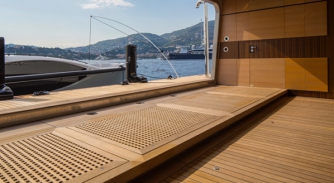
Teak decks, wood options and sustainability in yacht decking
An interview with André Hofmann, head of marketing & sales series yachts at Wolz Nautic, on the current situation in the teak market and plantat
Fleet
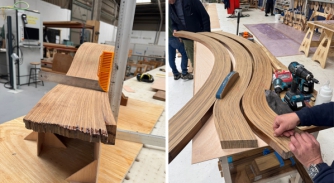
Build it and they will come
An interview with Richard Strauss, CEO of Teakdecking Systems, on ethical and sustainable teak alternatives that offer all the properties owners
Fleet
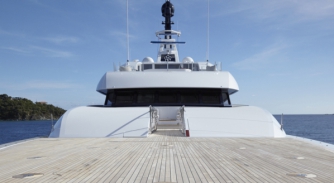
Deck to the future!
A deep dive into the drive to replace the endangered-teak supply chain with upcoming deck materials that are fast becoming the sustainable replacement options
Fleet
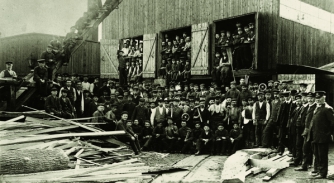
Related news
The Superyacht Report 226: Owners Focus – out now!
2 months ago
Build it and they will come
3 months ago
Deck to the future!
3 months ago
150+ years to 150+ metres
4 months ago
NEW: Sign up for
SuperyachtNewsweek!
Get the latest weekly news, in-depth reports, intelligence, and strategic insights, delivered directly from The Superyacht Group's editors and market analysts.
Stay at the forefront of the superyacht industry with SuperyachtNewsweek



